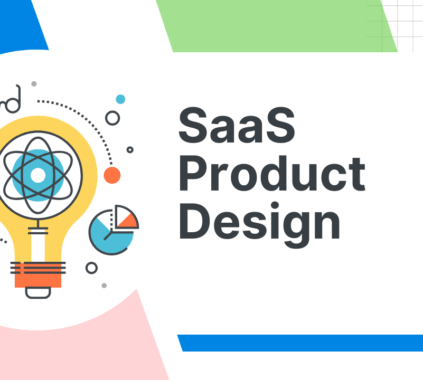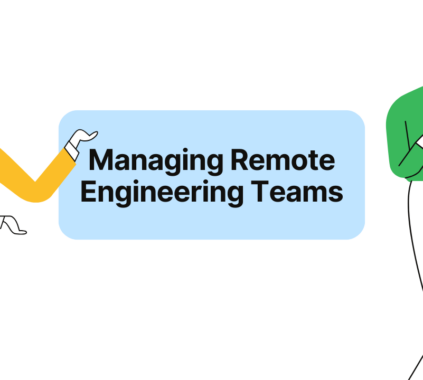Software development can often feel like navigating through a maze. With the ever-evolving technology landscape, choosing the right path—or in this case, the right software development model—can determine the success or failure of your project. But how do you know which model to choose? Each model has its strengths, weaknesses, and ideal use cases. Understanding these can save time, reduce costs, and improve the quality of the final product.
In this guide, we’ll walk you through the top five software development models, offering insights into their unique characteristics, advantages, and when each might be the best fit for your project. By the end, you’ll have a clear understanding of how to make the right choice.
Waterfall Model: The Traditional Approach
The Waterfall Model is one of the oldest and most straightforward software development models. It follows a linear and sequential approach, where each phase of development must be completed before the next one begins. This model is akin to a waterfall, where progress flows steadily downwards through the phases of requirements, design, implementation, verification, and maintenance.
Key Characteristics and Phases
The Waterfall Model is characterized by its rigidity. Once a phase is completed, there is no turning back. This makes it crucial to have a clear and detailed understanding of project requirements before starting. The phases are:
- Requirements: Gathering all the necessary information.
- Design: Creating the architecture of the software.
- Implementation: Writing the code.
- Verification: Testing the software for errors.
- Maintenance: Making necessary updates and fixes.
Pros and Cons of the Waterfall Model
The Waterfall Model’s strength lies in its simplicity and ease of management. Each phase has specific deliverables and a review process, making it easy to measure progress. However, its biggest drawback is the lack of flexibility. Any changes in requirements can be costly and time-consuming to implement.
Best Use Cases for the Waterfall Model
The Waterfall Model is best suited for projects with well-defined requirements and where changes are unlikely. It’s often used in industries like construction or manufacturing, where processes are repeatable and predictable.
Agile Model: Embracing Flexibility
In contrast to the Waterfall Model, the Agile Model is all about flexibility and adaptability. Developed in response to the limitations of the Waterfall Model, Agile emphasizes iterative development, where requirements and solutions evolve through collaborative effort.
Core Principles and Practices
Agile is built on principles that prioritize customer satisfaction, continuous delivery, and the ability to respond to change. Teams work in small, self-organizing units that complete parts of the project in short, iterative cycles called sprints.
Advantages and Disadvantages of the Agile Model
The Agile Model allows for frequent reassessment and adaptation, which can lead to higher customer satisfaction and better end products. However, this flexibility can also be a drawback if not managed well, leading to scope creep and potential delays.
When to Use the Agile Model
Agile is ideal for projects where requirements are expected to change or are not fully known at the outset. It’s commonly used in software development, particularly for projects with complex or evolving requirements.
Scrum Model: A Subset of Agile
Scrum is one of the most popular frameworks within the Agile Model. It’s designed to facilitate teamwork, accountability, and iterative progress toward a well-defined goal.
What is Scrum in Software Development?
Scrum breaks down the development process into small, manageable chunks called sprints, which typically last two to four weeks. During each sprint, a set of tasks is completed, and progress is reviewed in daily stand-up meetings.
Key Roles and Responsibilities in Scrum
The Scrum Model defines three key roles:
- Product Owner: Represents the customer and prioritizes the work.
- Scrum Master: Facilitates the process and removes obstacles.
- Development Team: Builds the product.
Benefits and Challenges of the Scrum Model
Scrum’s iterative approach allows for regular feedback and adjustments, leading to higher quality products. However, it requires a high level of discipline and clear communication to avoid pitfalls like misalignment of team goals.
DevOps Model: Integrating Development and Operations
The DevOps Model extends the principles of Agile by integrating development and operations into a single continuous process. This model focuses on reducing the time between committing changes to a system and the changes being placed into production.
How DevOps Differs from Agile
While Agile focuses on development, DevOps bridges the gap between development and operations. This results in faster deployment times, improved collaboration, and more reliable software releases.
Key Benefits of DevOps in Modern Software Development
DevOps promotes a culture of collaboration between developers and operations teams, leading to faster delivery, fewer errors, and quicker recovery from failures. According to the 2023 State of DevOps Report, companies that adopted DevOps practices experienced a 60% reduction in deployment times .
Scenarios Ideal for DevOps Implementation
DevOps is best suited for large-scale projects that require frequent updates and deployment. It’s commonly used in cloud-based applications, where continuous integration and continuous delivery (CI/CD) are critical.
V-Model: Verification and Validation Focused
The V-Model, also known as the Verification and Validation Model, is an extension of the Waterfall Model. It emphasizes testing at each stage of development, ensuring that each phase is validated before moving on to the next.
The V-Shape: Development and Testing Stages
The V-Model is structured like a V, with development phases on one side and corresponding testing phases on the other. For example, after the requirements phase, there is a corresponding testing phase to validate those requirements.
Advantages of the V-Model
The V-Model’s focus on validation helps catch defects early, reducing the overall cost and time of development. It’s a highly disciplined model, making it suitable for projects where testing is critical, such as in medical software or safety-critical systems.
Situations Where the V-Model Excels
The V-Model is ideal for projects with strict requirements and where changes are unlikely. It’s often used in industries with stringent regulatory requirements, such as healthcare or aerospace.
Iterative Model: Repeating Cycles for Improvement
The Iterative Model is a cyclical process where software is developed and refined through repeated cycles, or iterations. Each iteration produces a working version of the software, which is improved upon in subsequent iterations.
The Process of Iterative Development
In the Iterative Model, development starts with a simple implementation of a subset of the software requirements. Each iteration builds on the previous one, gradually adding more features and improving the product.
Pros and Cons of the Iterative Model
The Iterative Model allows for ongoing refinement and adaptation, making it highly flexible. However, it can also lead to project delays if iterations are not well-managed.
Ideal Projects for the Iterative Model
This model is best suited for large, complex projects where requirements are expected to evolve. It’s commonly used in game development, where continuous testing and refinement are necessary.
Choosing the Right Software Development Model
Choosing the right software development model depends on various factors, including project requirements, team dynamics, and client expectations. Here’s a quick comparison of the top five models:
- Waterfall: Best for well-defined projects with stable requirements.
- Agile: Ideal for projects with evolving requirements.
- Scrum: A great fit for teams looking for a structured Agile approach.
- DevOps: Perfect for projects requiring continuous integration and deployment.
- V-Model: Suited for projects with strict testing requirements.
- Iterative: Best for complex projects with evolving needs.
When selecting a model, consider your project’s specific needs, the size and experience of your team, and the level of customer involvement required.
FAQs: Common Questions About Software Development Models
Q1. Which software development model is best for my project?
The best model depends on your project’s requirements, the team’s expertise, and the expected changes. Agile is often preferred for its flexibility, while Waterfall is suitable for stable projects.
Q2. How does Agile compare to Waterfall?
Agile is flexible and iterative, allowing for changes during development. Waterfall is linear and requires detailed planning before development begins.
Q3. Can I combine multiple development models?
Yes, hybrid models are increasingly popular, combining elements of Agile, Waterfall, and DevOps to suit specific project needs.
Q4. What are the risks of choosing the wrong model?
Choosing the wrong model can lead to project delays, increased costs, and a final product that doesn’t meet user expectations.
Navigating the world of software development models can be challenging, but understanding the unique characteristics and benefits of each model can help you make an informed decision. Whether you choose the traditional Waterfall, the flexible Agile, or the integrated DevOps model, the key is to align your choice with your project’s specific needs. By doing so, you’ll set your project up for success and ensure that your final product meets both your team’s and your client’s expectations.
Ready to make the right choice for your software development project?
Contact us today to discuss your specific needs and get expert guidance on selecting the ideal model. Our team can help you streamline your development process, reduce costs, and deliver exceptional results.











